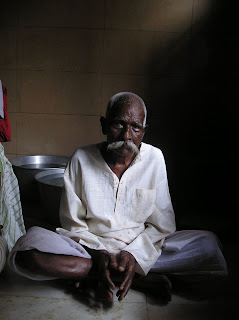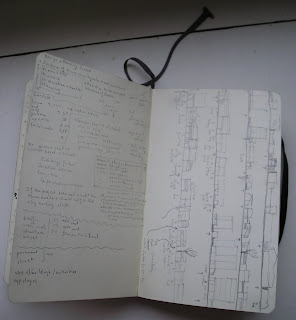An intervention for a further interaction with the people and a deeper comprehension of the place; to give something back and share what we are
YOU SPEAK, WE LISTEN
STEP 1: WE GO
Walk through the streets of Transit Camp asking the people to collaborate with our ‘golden box’, drawing, writing or telling us what they want to express.
STEP 2: THEY COME
After announcing it, we meet at the main public space in the area. There we continue recollecting and listening what people say. We also offer them the possibility to see the pictures we took in the area, where sometimes we also appear. For us these pictures represent our interaction and involvement with the people and their space. After we share snacks with them.
PREPARATION
We are preparing our intervention; we need Mr Paul’s support to be able to use the public space in Transit Camp. He is laughing when Pooja explains him our intention… It would be nice to know what he is thinking, he always seems relaxed, he is in his terrain; he is comfortable.
We can open the gate, but he would not assure that people will come, maybe the school is a better place, but we do not want to reduce the activity to one age group.
He thinks that language will enable us to get understood… he is right. We will try announcing the event and asking the people to come.
Paul knows how people think here; he says that no more than a 5% of the people will collaborate with us. We would be happy with that, a 5% of 60.000 people are a lot, maybe we cannot handle the situation. Those that are iliteral can speak and we will write for them.
Paul thinks that people will get irritated by us because when we ask for their dreams we are, at the same time, making the illusion of their fulfilment. The word ‘dream’ has already the connotation of something that may never become real, that unconsciously stays forever in your mind. This frustration we do not want to provoke, we better give the chance to the people to really say - writing, talking or drawing- whatever they want.
INTRODUCTION
These few days we have been trying to understand they way your economy, your society and your space work; in other words, we have been observing how you work, live individually, in family and in community, and how you move and order all this.
But, for good or for bad, we have not been able to leave behind our fixed ideas, programmatic attitude and pre structured mentality, not allowing ourselves to be a part of your reality.
In this step we want to get rid of our prejudices and ideas that drive our thoughts with no remedy.
We intend to know your feelings, fears, desires, your past, present and future, we aim to share dreams and realities.
We are here to listen whatever you want to tell us.
For these purposes we invite you to come tomorrow, at 5:00 P.M., to this place.
Thank you very much.
























 “My aim is to make the Mumbai airport slum free.”
“My aim is to make the Mumbai airport slum free.”


 Here we started our walk around Dharavi, it was promising...
Here we started our walk around Dharavi, it was promising...


 Beautifull: the tree is integrated in the building, why to cut it. Informality gives good chances.
Beautifull: the tree is integrated in the building, why to cut it. Informality gives good chances. He looked more angry that this drawing shows.
He looked more angry that this drawing shows. I was impressed on how reality shows itself, transparent... activities and workare seen, doors opened.
I was impressed on how reality shows itself, transparent... activities and workare seen, doors opened.





 Looking to the street, building with panoramic view to the road.
Looking to the street, building with panoramic view to the road. Drawing became imposible, the crowd was oppresive. I stoped when the touching went too far...
Drawing became imposible, the crowd was oppresive. I stoped when the touching went too far...






